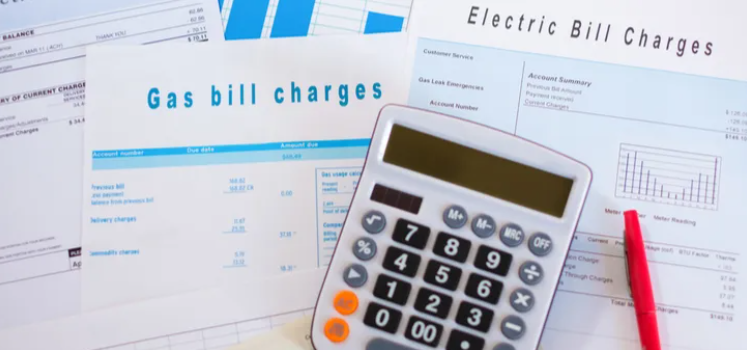Confusing and complex energy bills “are close to being a thing of the past”, says Energy Minister Angus Taylor.
His bold statement comes on the heels of new draft guidelines announced by the Australian Energy Market Commission (AEMC) that aim to make bills more user-friendly and provide increased protection for consumers.
Mr Taylor said the new standardised bill format would give Australians improved access to the information they need to make better decisions and shop around for a better deal.
“Complex and confusing energy bills that prevent energy users from getting the best deal possible are close to being a thing of the past,” said Mr Taylor.
“When Australians pay less for their energy, they have more money in their pockets and are better off, and this is particularly important as we recover from COVID-19.”
But don’t hold your breath, as the mandatory guidelines are set to come into play by August 2022, pending approval by the Australian Energy Regulator in April of that year.
In theory, the new format will make paying bills easier and provide customers with a clear understanding of charges and consumption levels. It should also empower consumers to challenge bills when they think they’re being unfairly charged and will give them options to confidently navigate the market and seek the best energy offer.
According to a New Daily report, Mr Taylor said energy bills in their various formats often confused customers.
The different terms to describe similar concepts and tariffs also made bills difficult to understand and made comparing providers more challenging, he said.
The new bills will highlight key support tools and services – such as the government’s free price comparison service, Energy Made Easy.
AEMC analysed four key areas on energy providers’ bills – language and terminology, bill format, content requirements and delivery requirements.
Its finding led to recommendations to the Australian Energy Regulator to develop mandatory guidelines that “govern how retailers prepare and issue bills to small customers”.
“In developing the guidelines, the regulator would need to make sure it achieved key goals, like providing for standard language and terminology in bills, contracts and offers, protecting small customers while promoting choice and competition, and considering the cost of any change to both retailers and consumers,” stated the AEMC.
“The new approach promotes key billing objectives such as including cost and usage information in bills that helps small customers use energy efficiently, participate in the market and consider investing in self-supply energy options like solar and batteries.”
It also recommended that it should be simpler for customers to make like-for-like comparisons between retailers, by being able to see their monthly consumption “in a graph format [to] help [them] better understand their historical usage”.
The AEMC suggested that providers should better utilise smartphone and smart meter technology, to give consumers better access to the information they need to make better energy decisions in ‘real-time’.
“We now have more digital platforms that allow two-way communication between retailers and consumers, who can see their energy use in – or close to – real time,” wrote the AEMC.
“There are more smart meters, there is more access to data and in future there will be new third-party providers to help consumers participate more actively in the energy market.”
According to the Australian Competition and Consumer Commission (ACCC), if some households switched from their existing offer to the median market offer, they could save up to $230 a year.
An average energy user who stays loyal to the most expensive supplier will end up paying $1500 more every year than those with the cheapest supplier.
Confusing pricing, sparse market competition and higher wholesale costs mean electricity bills have surged by a staggering 60 per cent over the past 10 years, says comparator Energyandgas.com.au.
Aussie households paid up to 29 per cent more for their electricity than they did at the same time in 2016, with Victorians experiencing the largest increase (up to $457 extra on their annual bills) followed by customers in New South Wales and South Australia.
Little wonder energy market regulators urge Aussies to review their energy bills annually.
And yet a new AEMC report shows that 94 per cent of Victorians are sitting on the market offer from their existing provider; so too are 89 per cent of South Australians, 83 per cent of New South Wales residents, 81 per cent of Queenslanders and 68 per cent of energy customers in the ACT.
“Market deregulation was supposed to reduce costs and make energy more affordable for everyday Aussies,” says an ElectricityandGas.com.au spokesperson.
“But the reality we have seen is incredible deals for some contrasted with complete rip-offs for others. It’s just not fair for the people stuck with the raw end of the deal.”
Do you find energy bills confusing? Have you considered trying to find a better offer? Or are you convinced you already have the best possible plan? Who are you with?
If you enjoy our content, don’t keep it to yourself. Share our free eNews with your friends and encourage them to sign up.
Related articles:
https://www.yourlifechoices.com.au/finance/news-finance/cut-more-than-200-off-your-energy-bills
https://www.yourlifechoices.com.au/finance/news-finance/save-on-your-energy-bill
https://www.yourlifechoices.com.au/news/energy-companies-get-ultimatum-on-prices

